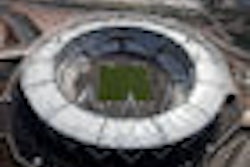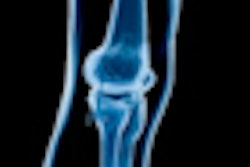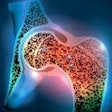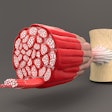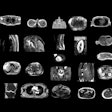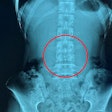
Canarian wrestling may be a fairly specialized and small-scale sport, but the physical prowess of its athletes has come under intense scrutiny from a group of Spanish researchers. Their findings were presented at the recent Euroecho and Other Imaging Modalities conference in Budapest.
 Canarian wrestling is a form of folk wrestling that originates in the Canary Islands, where it is known as Lucha Canaria. Wrestlers start in the middle of a sand circle, called terrero, and the object is to make their opponent touch the sand with any part of their body, except the feet. The rules were first laid down in 1872, making it one of the earliest defined forms of wrestling. All images courtesy of Dr. Alejandro de la Rosa Hernandez.
Canarian wrestling is a form of folk wrestling that originates in the Canary Islands, where it is known as Lucha Canaria. Wrestlers start in the middle of a sand circle, called terrero, and the object is to make their opponent touch the sand with any part of their body, except the feet. The rules were first laid down in 1872, making it one of the earliest defined forms of wrestling. All images courtesy of Dr. Alejandro de la Rosa Hernandez.
"This form of wrestling is a very traditional Canarian sport, very old, and very important to our population," said Dr. Alejandro de la Rosa Hernandez of Hospital Universitario de Canarias, based in the city of San Cristóbal de La Laguna. He studied the sport as part of his doctoral thesis.
Cardiac MRI is the gold standard for measuring volume quantification of the right ventricle (RV). It is well known that continuous and vigorous physical activity produces cardiac adaptations, and the researchers' aim was to compare RV remodeling in a group of endurance athletes (EAs), strength athletes (SAs) and a control group. A total of 52 athletes were tested -- 25 EAs and 27 SAs -- the latter all wrestlers from the Canary Islands. The sedentary control group numbered 16, and all the participants were men.
"There are very few women wrestlers," Hernandez explained. "Maybe in the future we can do that, but it will take some time to find the numbers."
Using 3-tesla MRI, echocardiography, and lower field strength MRI, the researchers looked at RV end-diastolic volume, systolic volume, and stroke volume, normalized to body surface area and ejection fraction. The preliminary results, at least, proved much closer than expected. "We thought the wrestlers would have been in worse physical shape, but they train more than they did years ago and are more professional; the results were similar to those of other SAs we have taken," he noted.
Not that there weren't a few problems. For a start, the EAs were more open to collaboration, perhaps because they have more general awareness of their bodies and how they work. The wrestlers were not so keen because they were worried about their physical fitness.
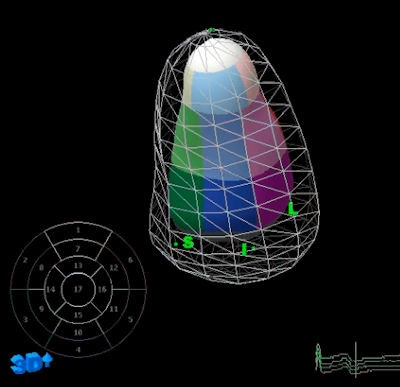 These images show left ventricular systolic function measured with 3D echocardiography in endurance athletes. Above: 3D echocardiography in systole of endurance athletes.Below: 3D echocardiography in diastole of endurance athletes. They were created using QLab software from Philips Healthcare.
These images show left ventricular systolic function measured with 3D echocardiography in endurance athletes. Above: 3D echocardiography in systole of endurance athletes.Below: 3D echocardiography in diastole of endurance athletes. They were created using QLab software from Philips Healthcare.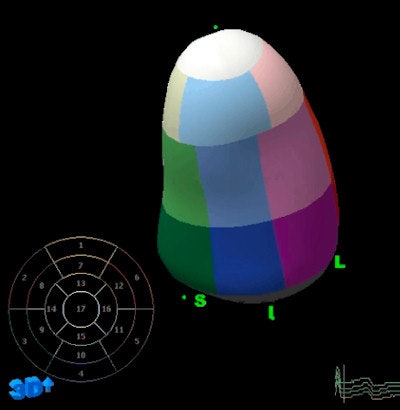
"They do not have any support, and it is not necessary to be tested for competition," Hernandez said. "They have very big bodies. There were five wrestlers who could not even get into the MRI machine, or had to be taken out because they became very claustrophobic. It was very important for us, for our experience. In the end, we had to choose athletes who were no more than 125 kg [275 lb]."
 Dr. Alejandro de la Rosa Hernandez presented his findings at this month's Euroecho conference in Budapest.
Dr. Alejandro de la Rosa Hernandez presented his findings at this month's Euroecho conference in Budapest.
And, as ever, the cost of scanning 68 people had to be addressed. Fortunately, the university has a program for this sort of study, and the university hospital facilities are available for research in the evening.
Hernandez hopes the final, detailed analysis will be published in June 2012. "We have done all the exams, and have the preliminary results; now we have to go into the analysis more deeply," he said.
Hernandez describes Lucha Canaria, or Canarian wrestling, as being like a combination of judo and wrestling, but it is perhaps more helpful to think of it as a slimmed-down version of sumo. Wrestlers stand in a sand circle called a terrero, but rather than push their opponent out of the ring, they try and make them touch the sand with any part of their body, except the feet. It is thought to date back to the Berber Guanches, the earliest known settlers of the islands, who probably brought it with them from North Africa. The first written reference to the sport is in 1420, shortly after the Spanish conquest of the Canaries.




